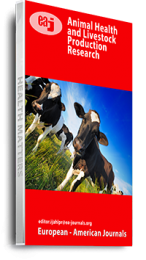Cattle are the major source of animal protein, flexible income, employment, farm energy and manure. Among the problems that affect cattle production is parasitic infections which predisposes them to other more serious health conditions and subsequently reduce their productivity, marketability and economic values. In this study, a total of 300 cattle from Awka, Amansea and Nkwor-Ogidi abattoirs in Anambra State were subjected to gastrointestinal and ectoparasitic examinations from the months of April to June, 2021. 150 cattle each were examined differently for the presence of ticks and another 150 cattle were examined for intestinal helminthes. A total of 394 ticks were collected with the aid of forceps and identified using a hand lens and stereo microscope. Tick examination result revealed that 114/150 (76%) of the cattle examined were infested. Five (5) genera of ticks were collected during the study and the genera with the highest prevalence of infestation was Amblyomma 73/150 (49%), while Hyalomma 27/150 (18%) had the least infestation. Statistical analysis showed that there was no significant difference in the prevalence of tick species in the cattle (p > 0.05). The Prevalence of ticks by attachment site, showed that there was a significant difference (p=0.00) in the number of ticks collected from different attachment sites with udder/scrotum having the highest percentage prevalence of 100/394 (25.5%), whereas the ear 28/394 (6.6%) was the least infected body part (p=0.013). Prevalence with respect to cattle breeds and sex of the cattle showed no significant difference (p > 0.05) which indicates that tick infestation is not dependent on the sex and breed of the cattle. Furthermore, faecal samples were collected from the 150 cattle and examined for the presence of intestinal parasites using direct smear and formol-ether concentration methods which were subsequently viewed under the microscope. The results revealed that (78%) of the total cattle examined were positive to intestinal parasites. The result also showed the presence of six (6) different intestinal parasite species in which the trematode group (Fasciola gigantica and Schistosoma bovis) recorded the highest prevalence of (57.3%), while the nematode (Ascaris spp and Strongyloides spp) had the least prevalence of (14.6%). Statistical analysis showed that there was a significant difference in the prevalence of intestinal parasite in the cattle (p=0.002). The high prevalence of gastrointestinal helminthes and tick infestation from the study can pose a serious health risk to the animal and also to the human population. Periodic application of acaricides, mixed grazing and regular deworming with the use of chemotherapeutic anthelmintic are strongly recommended.
Keywords: Ticks; Infestation; Gastrointestinal Helminthiasis; Cattle; Anambra State

